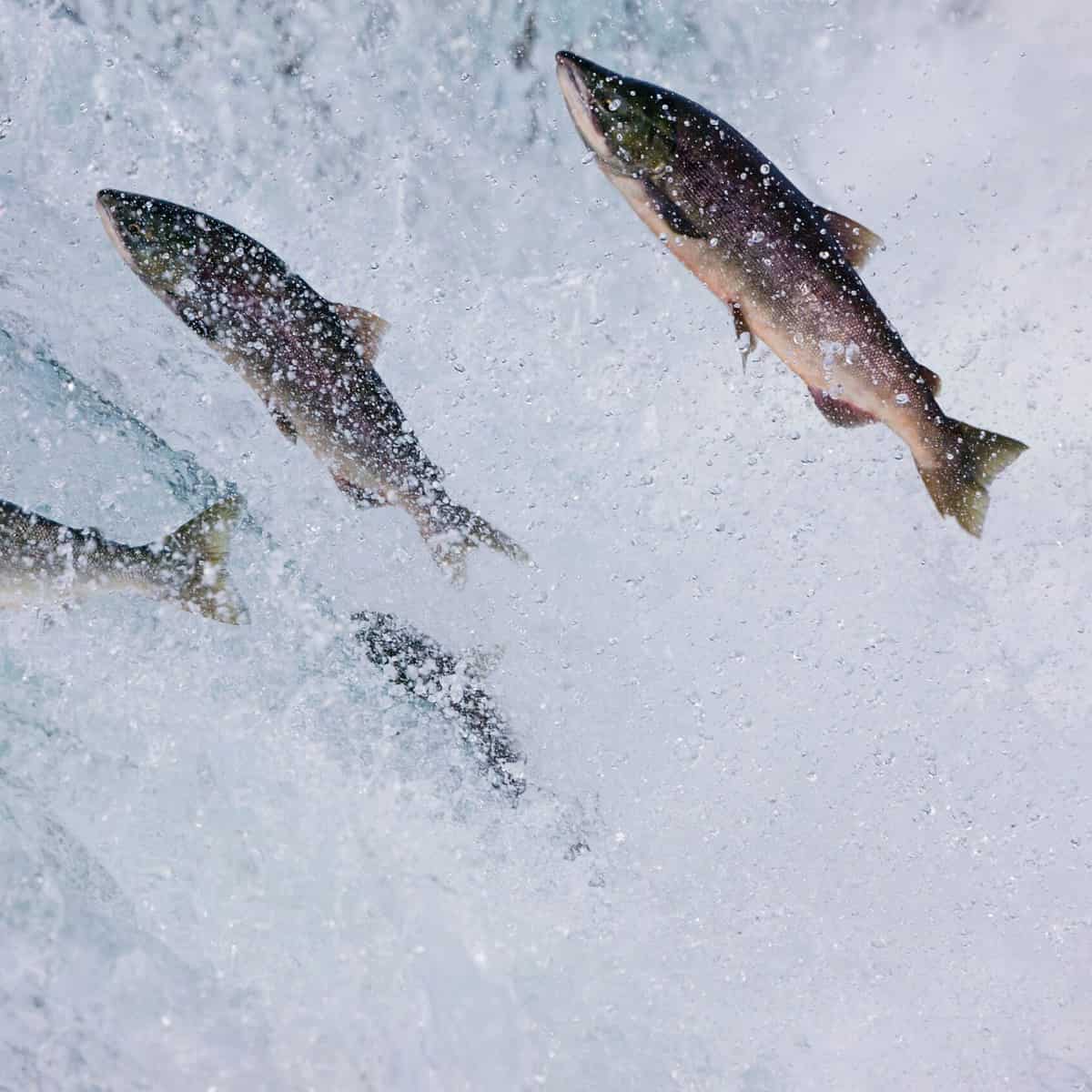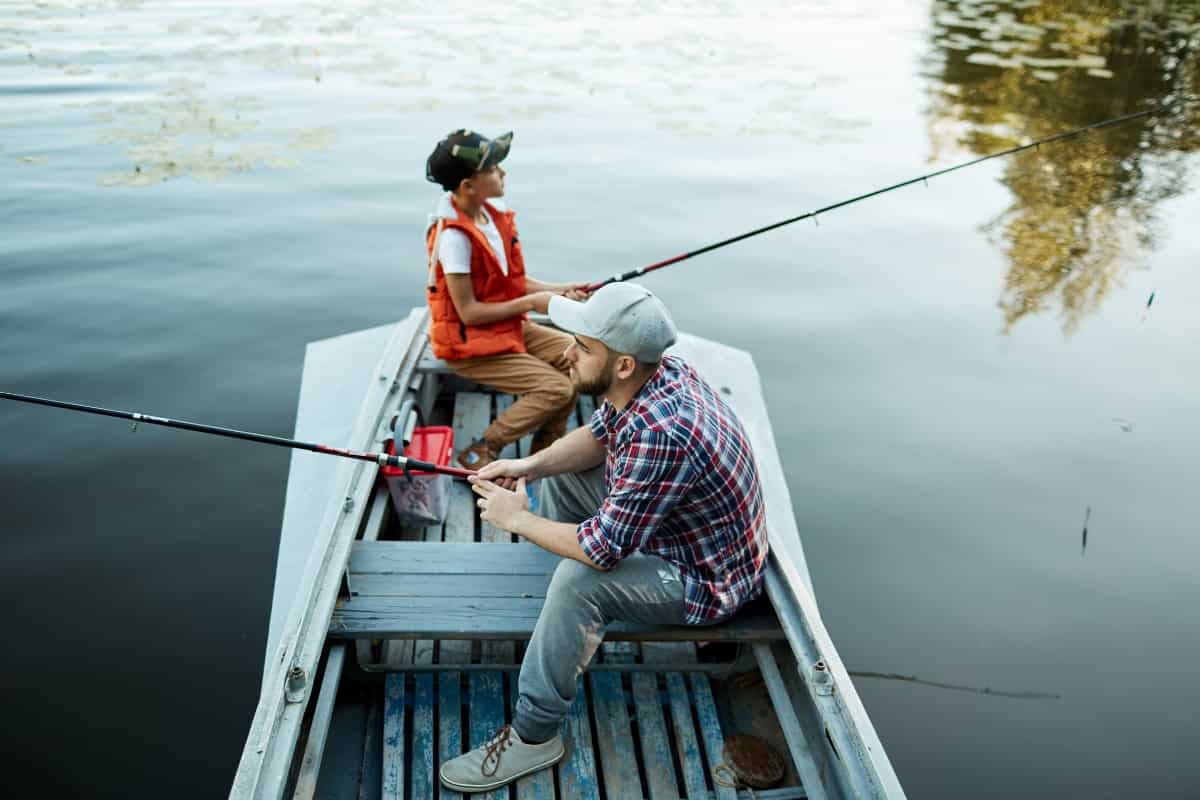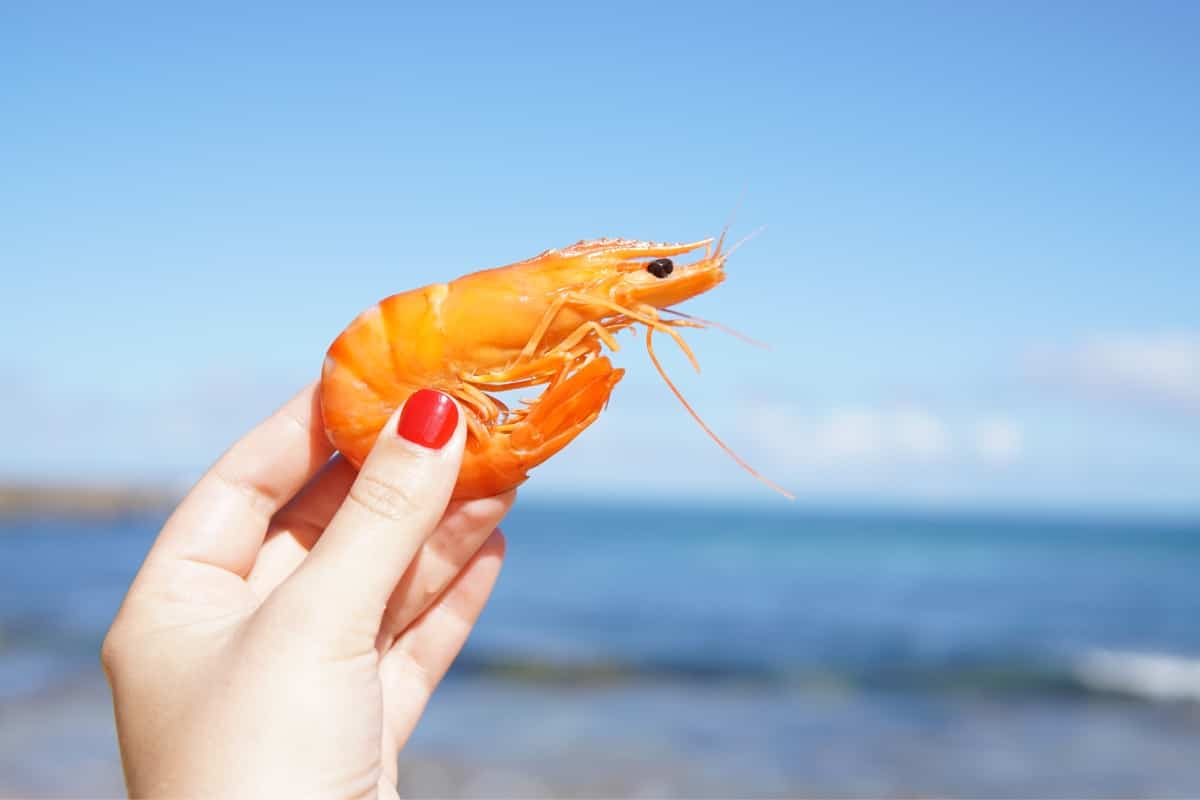
Brown trout have a special place in the hearts of anglers.
This trout species originated in Europe and proliferated quickly. Lesser in number than their famous cousin the gorgeous rainbow trout, this rare fish is a treat for both veteran and novice anglers.
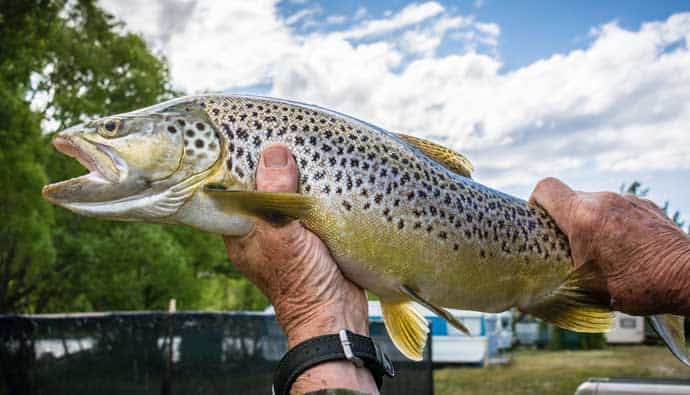
Browns thrive in cool rivers and lakes and are common in Argentina and Chile. Some can even swim right out of the water. Native varieties can go as far as Norway and the White Sea tributaries in Russia, as well as the Atlas Mountains, which are located in North Africa.
This self-sustaining trout can also be found all across the states, and it varies in size (ranging from 3 lbs to 7 lbs). However, the absolute whoppers can weigh up to 14 lbs.
In this article, we’re going to share with you some AMAZING trout fishing tips sure to help you catch a lot!
Brown Trout Facts
Brown trout, particularly the sea variety, is considered to be a single, polytypic species. Since this trout is quite adaptable, it has been further divided into several different species. The larger types are quite reclusive – they usually remain at the bottom or hunker down under a bank till night time. That is the only time they come out to hunt, which makes this time the best one to hunt the monster brown trout.
Unfortunately, because of its high value, Salmo trutta has been overfished. According to a study, they have decreased in numbers ever since they were first introduced back in 1884.
| Common Name | Brown Trout |
| Scientific Name (Genus and Species) | Salmo trutta |
| Family | Salmonids |
| Identifying Characteristics | Sea-run brown trout are silver with a few dark marks. River brown trout are darker with black or brown spots. Lake brown trout have a silvery hue. |
| Depth Range | 30 to 40 feet |
| Fishing Information | The first recorded introduction of brown trout occurred in Michigan in 1884. They can now be found all over the state. |
| Limits | Check your local regulations |
| Largest Recorded | The largest brown trout caught weighed 38 pounds and 7 ounces |
| Status | Least concerned |
Habitat
Brown trout can be found in cool rivers and lakes across the United States. Lake temperatures are consistent during the spring, which lures this trout species to the shallows.
Even if the water is cold, the warm weather encourages the fish to spawn, which it cannot do in deep water. In other words, spring is the best time to fish for brown trout. It swims to the depths during the winter (since that is the warmest part of the lake) and emerges during late fall.
How to Catch Brown Trout
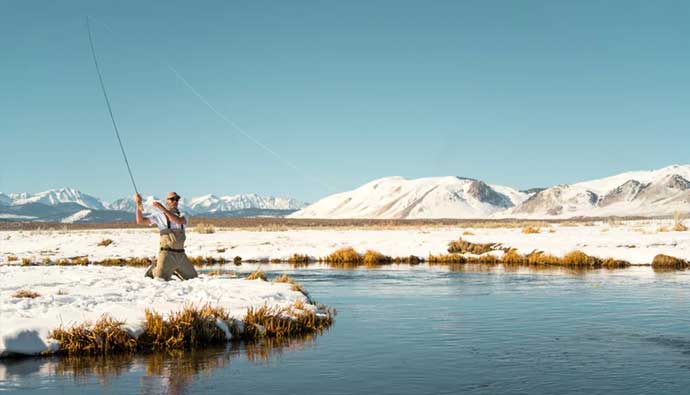
Shore Fishing
There’s no best way to catch this trout from shore. This fish isn’t particularly picky and can be caught using flies, lures, and baits. One of our favorite methods is using a Tenkara rod and keeping the fly fishing simple whenever possible, especially when hiking in the backcountry.
Lake Trolling
One of the best ways to fish for Salmo trutta is via trolling, especially when they swim to the deepest part of the lake. To perform this technique, use at least 150 feet of line so that you don’t disturb the surface of the water much, and cast far enough so that the sound of the boat’s engine doesn’t scare the fish. Plus, use a light spinning tackle to cast your bait.
Changing Diet
Most brown trout anglers know that the diet of the species differs according to size. The trout species usually starts off by feasting on crustaceans and insects. As it grows, it develops a taste for other fish, such as minnows, suckers, and even smaller trout! That is why some anglers prefer to use elaborate flies such as the Heifer Groomer.
Fishing Tactics
- If you are fishing in a river, try to remain behind boulders and other large structures that are on the water. The brown trout likes to hide behind these so that it can catch insects and other debris that floats by.
- If you are using spawn sacs as bait, fish them under a float just above the bottom and close to where the browns are. You will need a long rod for this and a reel that has a smooth drag.
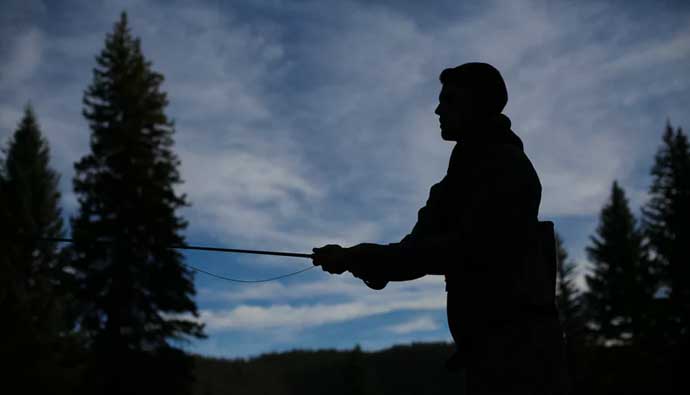
Brown Trout Fishing Tips
- Most browns can be caught easily with a light-action spinning rod. Like other species, this trout has excellent eyesight, so make sure you use a light line it cannot spot. The monofilament variety is a popular choice compared to braid – since trout have soft mouths, the stretchable line prevents damage.
- Even though larger varieties have sharp teeth, using a heavy leader or wire will not increase your chances of catching them. Just hope that the line does not get caught in those teeth. To ensure this, use lures, especially if you are fishing for big browns.
Which Season is Best to Catch?
Spring
Use flies that look like local insects in color and size to increase your chances of a large catch.
Summer
The best time to catch brown trout during the summer is during the first hour after sunrise. Most brown trout head to deep holes at the base of rapids to avoid the current.
Fall
Cast your line from a bar that is beside a feeder creek during the fall. That is the spot that browns migrate to from a lake or river for spawning.
Winter
During the winter, brown trout can be found in oxygen-rich dam trail races where it spawns. However, the water flow determines where you may find them.
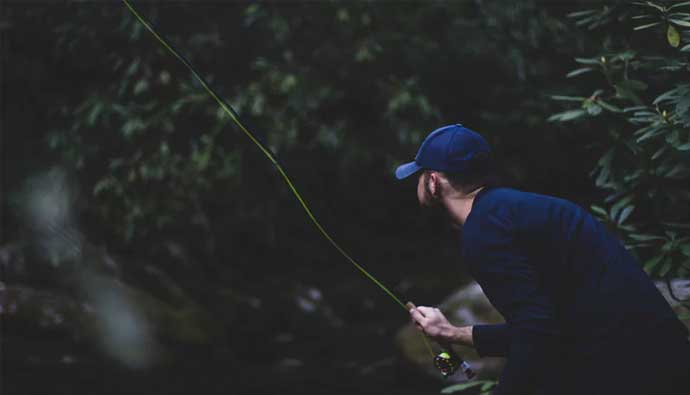
How to Clean Brown Trout
- Take the trout by the tail and, using a spoon scrape it from tail to head firmly on both sides to get the scales off.
- Cut off the head by making an angled cut right behind the gill. This will take a bit of force especially when you are cutting the backbone.
- Turn the fish over to expose its underside and look for the exit hole. This should be right above the tail.
- Insert the tip of the knife in the hole and slice all the way to where the head used to be.
- Spread the belly open through the cut and grab a fistful of the innards before pulling them out.
- Use the knife to slice the membrane open that runs across the backbone.
- Rinse the sliced and gutted trout inside and out and prepare to cook
How to Cook Brown Trout
Brown Trout Recipe
- Preheat your over to about 400°
- Mix a sliced apple, dill, and 3 scallions in a bowl and season according to taste.
- Take 2 pieces of parchment paper and fold them in half.
- Place a whole trout in each parchment and fill the cavities with the prepared mixture.
- Distribute butter and lemon slices in each.
- Fold the trout in the parchment paper and use string to secure it.
- Place both trout on a baking sheet and bake for 20 minutes to half an hour or till the paper puffs up.
- Serve piping hot.
Frequently Asked Questions
Q: What do brown trout eat?
A: Insects and even smaller trout and fish.
Q: When is the best time to fish for brown trout?
A: Spring is the best season to fish for brown trout since the temperature of the water is consistent throughout.
Insider Advice
The trout will also eat spoons and spinners but if you are fishing for the bigger ones, use jerk baits and minnow plugs. Make sure that the ones you use are in the color of the local foliage to fool this smart fish. If not, use a color pattern that mimics their skin color – brown trout also eat their young, so this bait will work.
This trout is a great fish for both veterans who want to improve their fishing game and novices who want to learn basic skills. If you would like to share your experiences of catching this amazing fish, comment below and share this article if you liked it.




 Facebook
Facebook YouTube
YouTube
